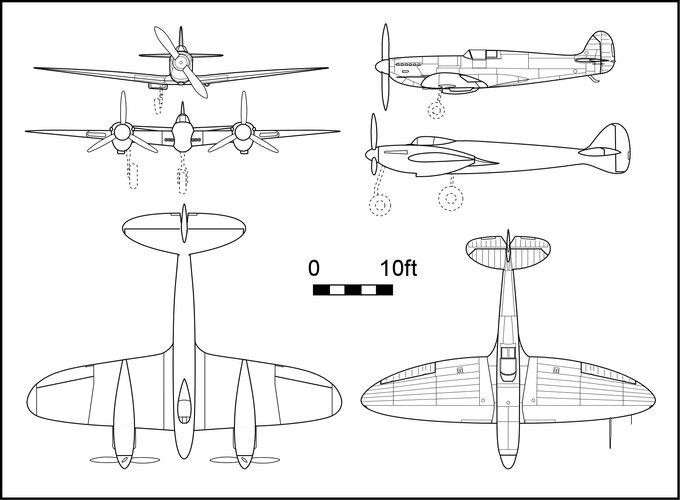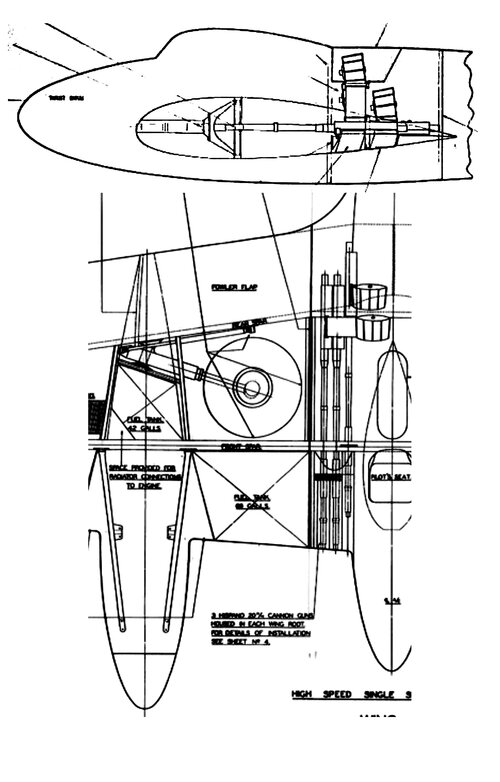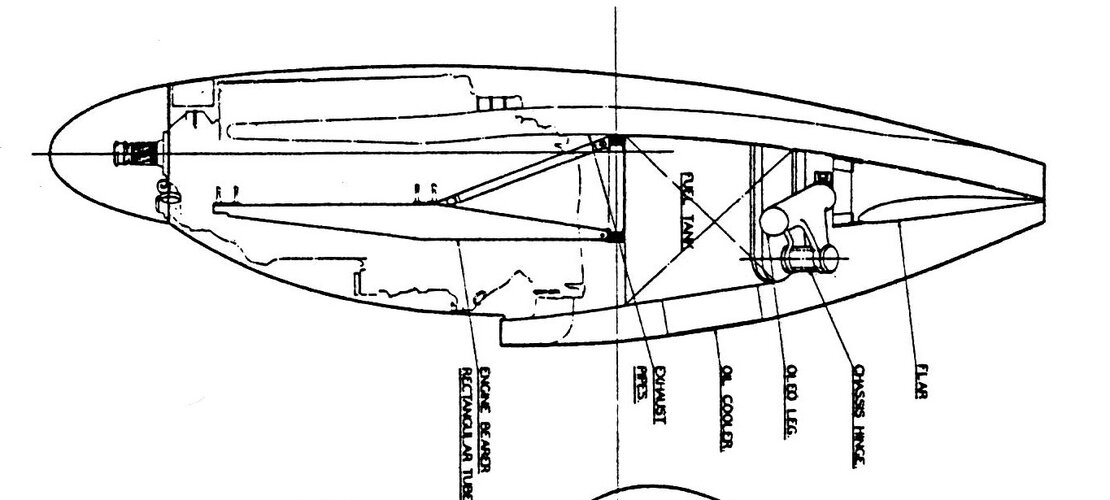You are using an out of date browser. It may not display this or other websites correctly.
You should upgrade or use an alternative browser.
You should upgrade or use an alternative browser.
Supermarine Type 327
- Thread starter Flitzer
- Start date
Matej
Multiuniversal creator
Did you click on "more attachments" link on the right side of the box, where is written link to the image?
- Joined
- 22 January 2006
- Messages
- 4,114
- Reaction score
- 1,695
Wow Peter,
You're a first class artist!. These is the way I love to see unbuilt projects: alive.
Thanks for sharing your art with us
Cheers
Antonio
Orinblamblam your bombers book will look incredible which such gorgeous profiles
You're a first class artist!. These is the way I love to see unbuilt projects: alive.
Thanks for sharing your art with us
Cheers
Antonio
Orinblamblam your bombers book will look incredible which such gorgeous profiles
red admiral
ACCESS: Top Secret
- Joined
- 16 September 2006
- Messages
- 1,623
- Reaction score
- 1,903
Probably a filesize limit on what you can attach. Or act of god.
thewanderingmind
Werfless
- Joined
- 2 August 2006
- Messages
- 25
- Reaction score
- 6
First time I'd seen these two aircraft, but, Flitzer: Damn, you're good! That's really excellent!
- Joined
- 28 October 2006
- Messages
- 1,004
- Reaction score
- 113
Hi Skybolt...
The profiles are computer generated using Freehand 9 for keyline and basic drawing out and Photoshop for assembly and colour work on a Mac.
If you are interested I did a "How to do your own colour profiles" feature on Armorama, now in the Aeroscale section. I did it way back and since then my techniques and methods have developed somewhat.
Are you going to have a go?
Cheers
Peter
: ;D
;D 
The profiles are computer generated using Freehand 9 for keyline and basic drawing out and Photoshop for assembly and colour work on a Mac.
If you are interested I did a "How to do your own colour profiles" feature on Armorama, now in the Aeroscale section. I did it way back and since then my techniques and methods have developed somewhat.
Are you going to have a go?
Cheers
Peter
:
- Joined
- 27 December 2005
- Messages
- 16,925
- Reaction score
- 21,800
Moved to own topic.
- Joined
- 16 December 2010
- Messages
- 3,296
- Reaction score
- 2,989
Sorry to bump an old thread like this, but I spotted the pictures and wondered if anyone had more information on this 'twin-Spitfire', I mean it's obviously a competitor for the Westland Whirlwind, but what was the specification.
- Joined
- 25 July 2007
- Messages
- 4,167
- Reaction score
- 3,835
Graham1973 said:... it's obviously a competitor for the Westland Whirlwind, but what was the specification.
Not really, Westland designed the Whirlwind to F.37/35. The Type 327 was a late submission (Aug 1938) to F.18/37. IIRC, the Type 327 was meant to replace Supermarine's earlier F.18/37 submission, the Type 325 (the pusher Type 324 having already been rejected).
- Joined
- 16 December 2010
- Messages
- 3,296
- Reaction score
- 2,989
Well she looks a fine bird, probably not a good dog-fighter (But then the Fighting Area Attacks didn't need one). That said she might have given the bombers a nasty surprise, provided of course, her 'little sisters' (Spitfires) could keep the BF-109's away.
Makes one wish Lucasarts had done a 'Secret Weapons of the RAF'.
Makes one wish Lucasarts had done a 'Secret Weapons of the RAF'.
Hi,
The Westland Whirlwind was reputed to be better than the 109 below about 15,000ft.
The Type 327 would have had about 50% more power, better at altitude and narrower wingspan.
Agreed she looks a fine bird.
The Westland Whirlwind was reputed to be better than the 109 below about 15,000ft.
The Type 327 would have had about 50% more power, better at altitude and narrower wingspan.
Agreed she looks a fine bird.
Graham1973 said:Well she looks a fine bird, probably not a good dog-fighter (But then the Fighting Area Attacks didn't need one). That said she might have given the bombers a nasty surprise, provided of course, her 'little sisters' (Spitfires) could keep the BF-109's away.
Makes one wish Lucasarts had done a 'Secret Weapons of the RAF'.
- Joined
- 22 April 2012
- Messages
- 2,270
- Reaction score
- 2,050
From the UK National Archives - in which the entire Supermarine 327 brochure survives along with Air Ministry notes on it.
Note that total internal fuel is 220 imp gallons.
The files are clear that the armament arrangement was regarded as impractical (hard to disagree with) the pilot view was questioned (though the gunsight view was preferred compared to the Spitfire/Hurricane) and most importantly a large part of the decision making group thought turret fighters were the future and thus wanted no additional types beyond the Whirlwind, Tempest/Typhoon and Boulton Paul P.92 in development. In addition there were concerns about the design capacity at Supermarine given the number of projects they were working on and likely to bid for in future. There was also an offer to replace the cannon with 12 x .303 machine guns mounted in the outer wings but this was frowned upon because of likely scattering in the fire caused by wing flexing, although this does make me wonder whether additional fuel tanks could have been installed in the outer wings.
Note that total internal fuel is 220 imp gallons.
The files are clear that the armament arrangement was regarded as impractical (hard to disagree with) the pilot view was questioned (though the gunsight view was preferred compared to the Spitfire/Hurricane) and most importantly a large part of the decision making group thought turret fighters were the future and thus wanted no additional types beyond the Whirlwind, Tempest/Typhoon and Boulton Paul P.92 in development. In addition there were concerns about the design capacity at Supermarine given the number of projects they were working on and likely to bid for in future. There was also an offer to replace the cannon with 12 x .303 machine guns mounted in the outer wings but this was frowned upon because of likely scattering in the fire caused by wing flexing, although this does make me wonder whether additional fuel tanks could have been installed in the outer wings.
Attachments
Last edited:
- Joined
- 19 October 2012
- Messages
- 1,954
- Reaction score
- 1,843
blackkite
Don't laugh, don't cry, don't even curse, but.....
- Joined
- 31 May 2007
- Messages
- 8,598
- Reaction score
- 6,849
Amazing!!JFC Fuller said:From the UK National Archives today- in which the entire Supermarine 327 brochure survives along with Air Ministry notes on it.
Note that total internal fuel is 220 imp gallons.
The files are clear that the armament arrangement was regarded as impractical (hard to disagree with) the pilot view was questioned (though the gunsight view was preferred compared to the Spitfire/Hurricane) and mostly importantly a large part of the decision making group thought turret fighters were the future and thus wanted no additional types beyond the Whirlwind, Tempest/Typhoon and Boulton Paul P.92 in development- which is interesting. In addition there were concerns about the design capacity at Supermarine given the number of projects they were working on and likely to bid on. There was also an offer to replace the cannon with 12 x .303 machine guns mounted in the outer wings but this was frowned upon because of likely scattering in the fire caused by wing flexing, although this does make me wonder whether additional fuel tanks could have been installed in the out wings.
- Joined
- 19 October 2012
- Messages
- 1,954
- Reaction score
- 1,843
Two captions in one, the lower one not relevant to the picture.From, Secrets of the Spitfire.
So, Coles caption to the image is wrong in four regards. The project has not remained unseen for decades, it has been shown many times before. The Types 324, 325 and 327 were not designed by Shenstone, as with other Supermarine projects he would have contributed aerodynamic knowledge but he was never the lead designer on any of them. The B.12/36 bomber was also not designed by him, neither was it delta winged. How do you get so much wrong in one caption?
Last edited:
blackkite
Don't laugh, don't cry, don't even curse, but.....
- Joined
- 31 May 2007
- Messages
- 8,598
- Reaction score
- 6,849
Attachments
- Joined
- 3 June 2006
- Messages
- 2,968
- Reaction score
- 3,241
Primary source: British Secret Projects 3: Fighters 1935-1950 by Tony Butler, page 25 to 27 in the newer issue.
- Joined
- 19 October 2012
- Messages
- 1,954
- Reaction score
- 1,843
- Joined
- 19 October 2012
- Messages
- 1,954
- Reaction score
- 1,843
- Joined
- 19 October 2012
- Messages
- 1,954
- Reaction score
- 1,843
Radiators outboard of the engine nacelles where the wing profile was much lower t/c
blackkite
Don't laugh, don't cry, don't even curse, but.....
- Joined
- 31 May 2007
- Messages
- 8,598
- Reaction score
- 6,849
Hi! Type 324.
https://raigap.livejournal.com/439126.html
https://raigap.livejournal.com/439126.html
Attachments
Last edited:
- Joined
- 25 June 2014
- Messages
- 1,564
- Reaction score
- 1,483
Source:
Tony Buttler; "The Next Chapter", Aeroplane, June 2020, pp.42-47.
This includes around 1 1/2 pages of text, with original layout and detail drawings of the three types discussed below.
The Type 327 was preceded by the Types 324 and 325, in response to Specification F18/37 issued in March 1938, aimed at a Spitfire and Hurricane replacement and demanding more Brownings than you could shake a stick at. Supermarine offered the Type 324 in two options, with twin Merlins or twin Bristol Taurus radials. Alongside that it offered the same engine combis but with pusher props. All would have had the two engines rotating in opposite senses to cancel out torque. Speeds were predicted to be 10 mph more than the equivalently-engined Spitfire.
Sizes varied slightly, spans being just over 40 ft and lengths over 31 ft. The main u/c was attached behind the engines and retracted inwards into the rather thick wing. All had nosewheels.
Supermarine lost out to Hawker's two variants, which resulted in the R-R Vulture powered Tornado prototype and the ultimately successful Napier Sabre driven Typhoon. But Supermarine did not give up, picking up on the trend towards cannon with a six-cannon variant, the Type 327, and positioning it as a fallback for the Westland Whirlwind already under development. They were awarded a contract for a full-scale mock-up, but that was as far as it ever got. The Bristol Beaufighter would presently fill the gap left by the struggling Whirlwind.
Tony Buttler; "The Next Chapter", Aeroplane, June 2020, pp.42-47.
This includes around 1 1/2 pages of text, with original layout and detail drawings of the three types discussed below.
The Type 327 was preceded by the Types 324 and 325, in response to Specification F18/37 issued in March 1938, aimed at a Spitfire and Hurricane replacement and demanding more Brownings than you could shake a stick at. Supermarine offered the Type 324 in two options, with twin Merlins or twin Bristol Taurus radials. Alongside that it offered the same engine combis but with pusher props. All would have had the two engines rotating in opposite senses to cancel out torque. Speeds were predicted to be 10 mph more than the equivalently-engined Spitfire.
Sizes varied slightly, spans being just over 40 ft and lengths over 31 ft. The main u/c was attached behind the engines and retracted inwards into the rather thick wing. All had nosewheels.
Supermarine lost out to Hawker's two variants, which resulted in the R-R Vulture powered Tornado prototype and the ultimately successful Napier Sabre driven Typhoon. But Supermarine did not give up, picking up on the trend towards cannon with a six-cannon variant, the Type 327, and positioning it as a fallback for the Westland Whirlwind already under development. They were awarded a contract for a full-scale mock-up, but that was as far as it ever got. The Bristol Beaufighter would presently fill the gap left by the struggling Whirlwind.
Last edited:
Dagger
ACCESS: Secret
- Joined
- 24 December 2019
- Messages
- 322
- Reaction score
- 583
The article is by Tony Buttler, as far as I can see only the "speculative rendering of a Supermarine Type 327 in the post-D-Day markings of No 3 Squadron" is by Chris Sandham-Bailey.Source:
Chris Sandham-Bailey; "The Next Chapter", Aeroplane, June 2020, pp.42-47.
All had nosewheels.
What strikes me especially is the big nose wheel of the mock-up which looks same size as the main wheels and looks like that of the Horten Ho 229V3 years later.
On the drawing however it looks smaller than the main wheels.
After retraction it sits behind the cockpit in vertical position, as in the later Ho 229V3.
Presumably they put the cannons in the wing roots as there was not enough space in the nose.
Lockheed did a better job when designing the P-38.
- Joined
- 25 June 2014
- Messages
- 1,564
- Reaction score
- 1,483
The article is by Tony Buttler, as far as I can see only the "speculative rendering of a Supermarine Type 327 in the post-D-Day markings of No 3 Squadron" is by Chris Sandham-Bailey.Source:
Chris Sandham-Bailey; "The Next Chapter", Aeroplane, June 2020, pp.42-47.
Thanks for the correction, silly me. I'll go back and update my post.
- Joined
- 19 October 2012
- Messages
- 1,954
- Reaction score
- 1,843
Similar threads
-
-
British F.7/30 fighter specification.
- Started by blackkite
- Replies: 18
-
-
-
Strategic Air Command in the UK - Robert S. Hopkins III
- Started by CJGibson
- Replies: 2



















